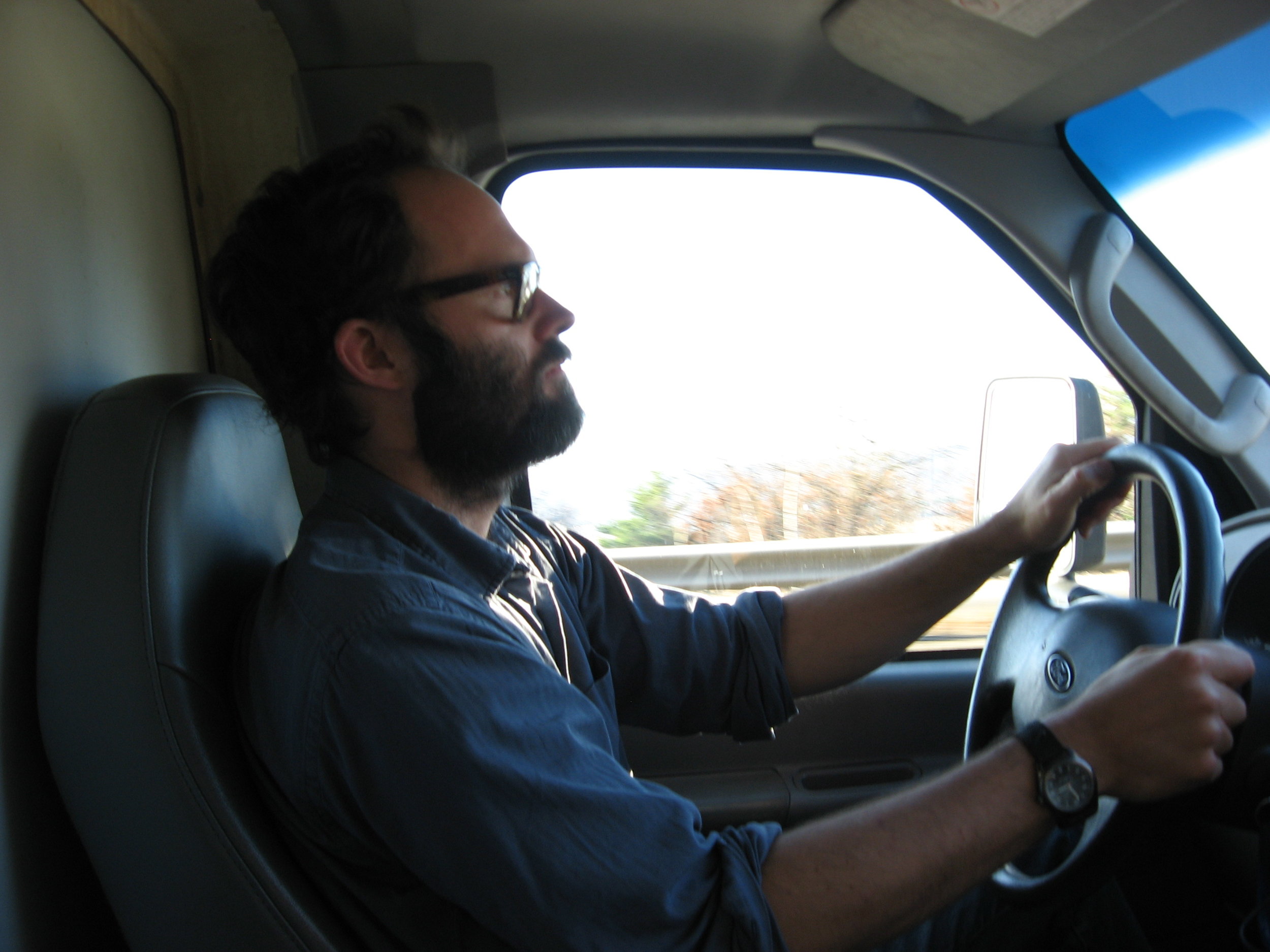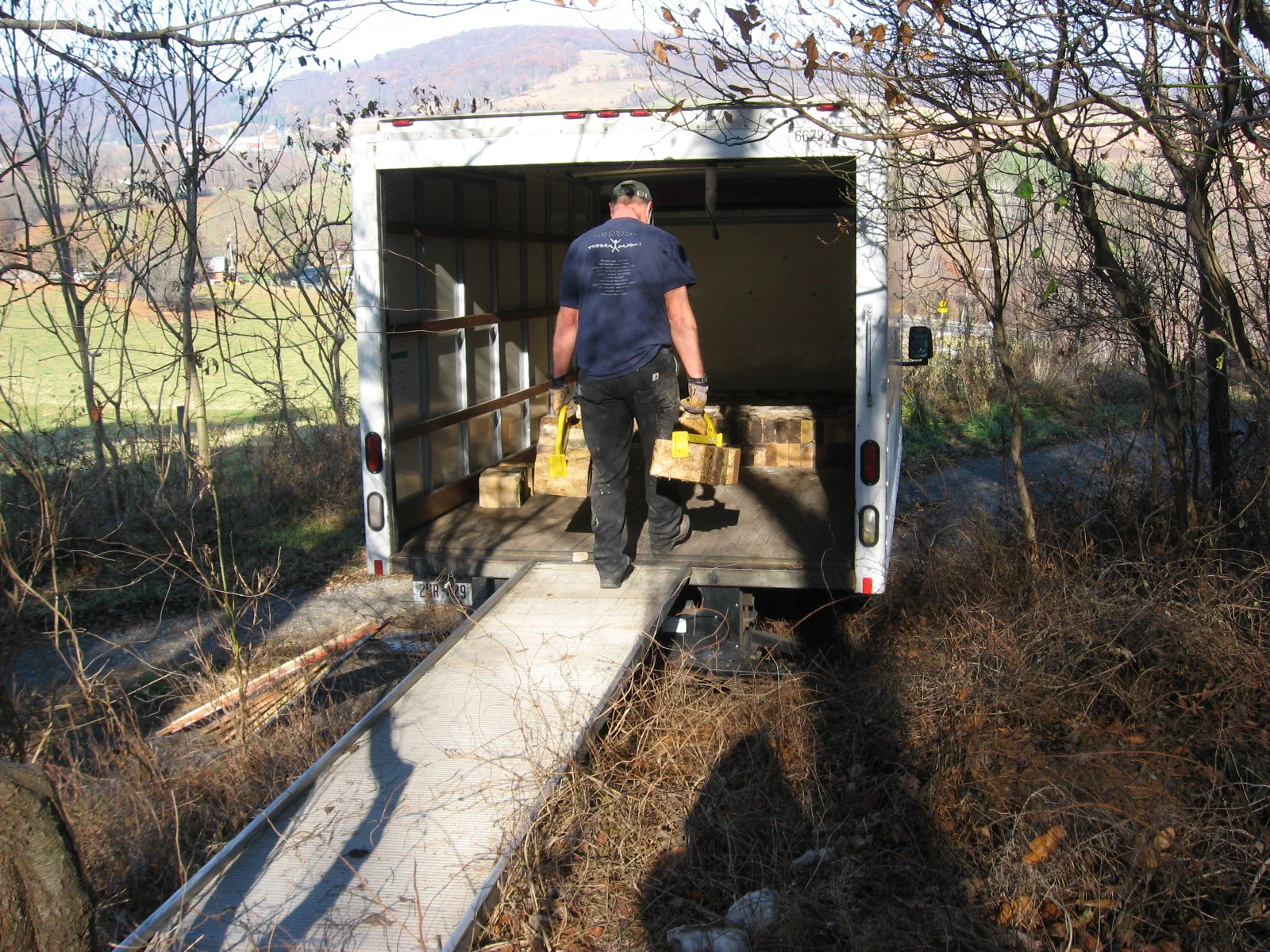Building a Kiln (Part 1)
I just finished building my sixth kiln if you count the one I built when I was in high school. That kiln was fired with two burners that I salvaged from an old propane oven I found at the dump and had modified by the father of a high school friend. My newest kiln is about 30 cubic feet, has a sprung arch, down-draft style and fired by two power burners made by the Ward Burner Company. It took me about two weeks to build, which was pretty fast if you consider the one I built just before this one took me almost two years to complete. That kiln was bigger, made mostly of hard fire brick and could be fired with either LPG (propane) or wood or both at the same time. My intention was to learn about this combination kiln by firing it a few times with gas and then rely only wood in the future. I first learned about this dual fuel kiln concept a few years ago after reading a book by Joe Fitch entitled, Kiln Construction: A Brick by Brick Approach.
After reading Fitch’s book, I was convinced that this was the kiln I had to have in order to achieve the goal of setting up an active and hopefully, thriving pottery business. As I read the book, it made me reflect on the wood kiln that I helped build and fire in college. It was large at about 60 cubic feet and could hold the work of several students easily, which was a good thing because it took several people to fire. Six of us ceramics majors who made pots for the firing took part in some if not all of the 24 hours it took to get the kiln up to temperature. It was exciting to see the process from first starting a fire with a few wood scraps and newspaper to reaching the firing temperature of about 2400 roaring degrees. Stoking the ports with wood at regular intervals and watching the flames lick out of every opening in the kiln was frightening, exciting, primitive and romantic and I wanted to experience it again.
With those memories as motivation, I started looking for bricks; high-duty fire bricks. New bricks would be very expensive so I decided to try to find some that were used, but still in good condition. Craigslist offered nothing in Vermont, New York or New England. Broadening my search to the outer edges of the Northeast didn’t prove successful either so I kept looking further and further from my studio in Central Vermont until I had three options. One was in Maryland and two were in Pennsylvania. It turned out that all three were almost the same distance away and travel times were comparable, so I started looking at which made the most sense financially. I calculated that I needed about 500 brick to build the kiln. The two places in Pennsylvania both had exactly the amount I needed, they were clean, piled on pallets, ready to be loaded on a truck or trailer and the price was $500. The bricks in Maryland were in several semi-stacked piles, not clean, quantity unknown although estimated at “more than 500” and priced at $600. Factoring in the additional costs of renting a truck, the distance and travel time all were about the same. I decided to buy the bricks that were in Maryland, mainly because it offered me, hopefully, more bricks than I needed for almost the same price.
Jackson on our trip to pick up bricks in Maryland.
I enlisted my son, Jackson, to help and started working on the plan to travel south to pick the bricks up. The plan consisted of renting a car in Vermont, driving it to Maryland, turning the car in at the rental place, picking up the rental truck, staying overnight in a hotel, loading the bricks, driving home, unloading the bricks and returning the truck to the rental company’s franchise in Vermont. All of this was to take place over two days in November. We picked a window of days that was forecast to offer good weather and the brick’s owner would be available and headed south. Another straight forward plan.
With Jackson as a co-driver and an early start of 5:30 am, I figured it would be about a twelve hour drive to Maryland. My estimate was accurate and after a good night’s sleep in a hotel and continental breakfast that wasn’t so good, we headed out to find the brick seller’s house, load up and head for home. The piles of bricks were stacked toward the back of the property, along a tree line. Given the property sloped up steeply from the house to the brick piles, Chris, the brick seller, suggested we access them from a utility road on the side of his property. We drove our 16’ Budget truck up the road and then backed into the bank alongside the brick piles getting as close as we could. Other than some old fencing, it was a pretty straight shot of fifty feet from the piles to the back of the truck. Jackson and I took turns with the brick carriers we had brought with us while the other made rows of brick to make it easier to grab each load. The bricks were larger than standard brick and so four in each carrier at a time was a load. At a little over twelve pounds each, a load with the two carriers was almost 100 lbs. I decided to spread the load out as much as possible so as to not overload any one part of the truck. Four hours later, we had all the bricks loaded, about 700 in all, paid Chris and after one more check of the truck’s leaf spring, which gladly hadn’t flexed much from the very heavy load, we started up the truck and headed for home. As soon as I pulled away from the bank, the truck body dropped about a foot and a half and I realized that the reason the springs hadn’t flexed much was because the truck’s bumper had become lodged in the bank and it was holding all the weight off the springs.
The trip home was slow, challenging and scary, especially knowing how little leaf spring we had to cushion every bump we went over and the speed and momentum the truck gained every time we crested the top of a hill and started over the other side. Jackson and I tried not to think about the bricks slamming forward into the cab of the truck if we got into an accident or ran into a large and unforgiving obstacle. As a result, there wasn’t a lot of talk on the trip home, just two sets of eyes watching the road and what was up ahead and our ears keyed in on the truck’s engine straining and transmission screaming with each rise in the road.
Loading up the rental truck in Maryland.
Jackson did most of the driving leaving me to worry that a break-down was imminent due to broken leaf springs or engine failure from overworking and we would have to transfer all the bricks to another truck or trailer someplace in the middle of Pennsylvania coal country. The scenario running through my mind was also complicated by how I would explain to the Budget truck representative who would show up with a new truck how it was that we had clearly exceeded the load limit posted in several prominent places inside and outside the truck. Miraculously, we slowly but steadily made it north through Pennsylvania and into Connecticut then Massachusetts and finally Vermont. We arrived home, in a snow storm, at about midnight and after dropping Jackson off at his house, I parked the truck behind my studio and headed to bed. The next day, my other son, Ross, came over and he and I unloaded the bricks into a neat stack not far from where the kiln was to be built. I returned the truck the next day and was happy to finish the “Brick Trip to Maryland” chapter and to not think about bricks for a few days.
When I thought about the bricks again and the work to build the kiln, I wondered about what the bricks had been used for and by whom in their previous life. When I picked the bricks up in Maryland, Chris said only that when he bought the house, the previous owner had been a potter and he had used the brick to build a large kiln. I wanted to know more. By the looks of the deposit on many of the bricks, I guessed the potter fired it with wood or used it as a salt kiln or both. Determined to learn more, I got the name of a potter, Bill van Gilder, who has a studio near where I bought the bricks and contacted him to ask if he knew anything about the potter, his kiln and bricks. Here’s the message I received from Bill a few days after contacting him:
Wow. The potter who owned the bricks is Bruce Bartol. Now there's a blast from the past.
I have known Bruce as a friend & potter since the mid-'70's. He & his then partner, Sally Baker, built a salt-glazing, working pottery on the property near Middletown in the early '70's. At the time, I was working clay in Europe & Africa and 1st met them during a quick home visit. Bruce was making some interesting thrown & hand built pots using v high-iron clays. Sally made quite fine porcelain pots. Everything was salt glazed. They used the 2-story building which is/was located at the left of the lane as a studio/making shop. They also used the basement of the house as a shop during the colder winters.
Sally left the business & Bruce around the late '70's & the pottery stopped functioning shortly thereafter. I'm thinking that Sally stopped making pots in the '80's due to illness.
I'm also thinking the kiln was last fired about 1976 or '77. It was fired with gas to ^9-10, heavily salted & reduced. The brick came from a local cement plant... used brick that lined the gas-fired circular lime kilns. Hence, their tapered & wedged odd shapes and the odd coating you're seeing. They are all high temp. brick.
Bruce still lives in Frederick, Md, but hasn't worked w/ clay for many years due to illnesses. I see him v occasionally by chance.
Knowing how the bricks had been used and a little about the potters who used them was important to me both for practical reasons and for possibly channeling some good energy from them as I started building the new kiln. Despite learning that the brick’s previous potters had some bad luck with their relationship and business, I was thinking positively and was ready to get started. First, I had some bricks to clean.
Unloading the bricks back home in Vermont.



